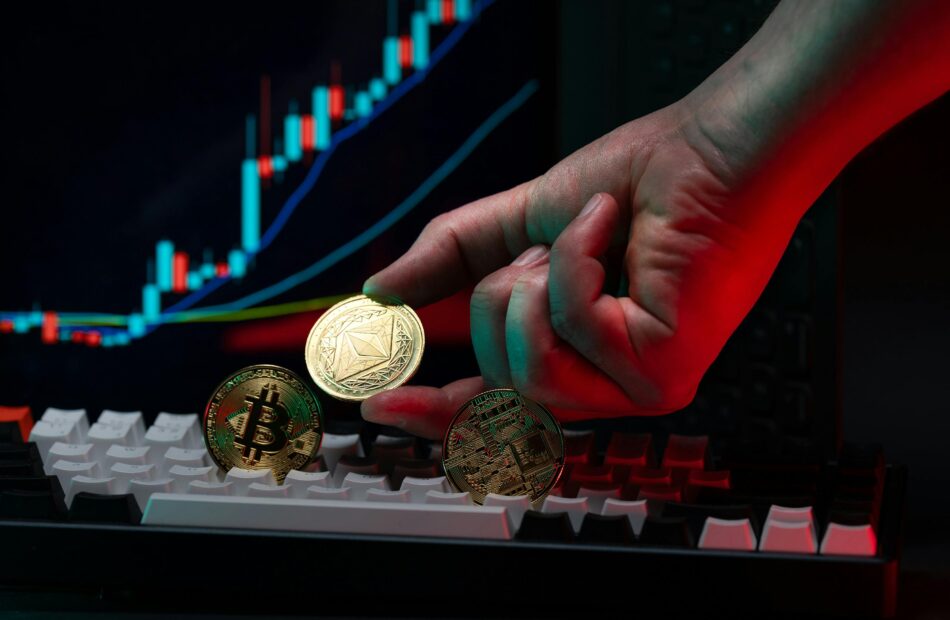South Korean crypto exchange users hit 16M in ‘saturation point’
Crypto exchange users in South Korea have crossed over 16 million after receiving a boost following US President Donald Trump’s election win last November. Data submitted to representative Cha Gyu-geun of the minor opposition Rebuilding Korea Party found over 16 million people had crypto exchange accounts out of a total population of 51.7 million, according to a March 30 report from local news agency Yonhap. This would be equivalent to over 30% of the population. All the data was taken from the top five domestic virtual exchanges in South Korea: Upbit, Bithumb, Coinone, Korbit and Gopax. Individuals with multiple accounts were only counted once.Industry officials are reportedly speculating the number of crypto users could hit 20 million by the end of the year, with one unnamed official being cited by Yonhap saying: “Some believe the crypto market has reached a saturation point, but there is still an endless possibility for growth compared with the matured stock market.” Following Trump’s election win last November, the number of crypto users spiked by over 600,000 to 15.6 million, collectively holding 102.6 trillion South Korean won ($70.3 billion) in crypto assets.Investors in South Korea’s crypto market had 102.6 trillion South Korean Won ($70.3 billion) in crypto assets as of last December. Source: Yonhap NewsThe number of crypto investors exceeded 14 million in March 2024, according to Yonhap.Meanwhile, Korea’s Securities Depository shows only 14.1 million listed individual investors in the stock market as of December last year, according to the South Korean financial publication the Maeil Business Newspaper. Related: South Korea inches closer to Bitcoin ETF decision, looks to Japan as exampleSouth Korean public officials have also reported holding and investing in crypto. The country’s Ethics Commission for Government Officials disclosed on March 27 that 20% of surveyed public officials hold 14.4 billion won ($9.8 million) in crypto, representing 411 of the 2,047 officials subjected to the country’s disclosure requirements to hold crypto assets. The highest amount disclosed was 1.76 billion won ($1.2 million) belonging to Seoul City Councilor Kim Hye-young. Meanwhile, on March 26, the Financial Intelligence Unit of the South Korean Financial Services Commission published a list of 22 unregistered platforms and 17 that were blocked from the Google Play store. Magazine: Crypto fans are obsessed with longevity and biohacking: Here’s why
California introduces ’Bitcoin rights’ in amended digital assets bill
A Californian lawmaker has just added Bitcoin and crypto investor protections to a February-introduced money transmission bill aimed at securing crypto self-custody rights for the US state’s nearly 40 million residents.California’s Assembly Bill 1052 was introduced as the Money Transmission Act on Feb. 20, 2025, but was amended by Democrat and Banking and Finance Committee chair Avelino Valencia on March 28 to include several Bitcoin (BTC) and crypto-related investor protections. The amendments cross out “Money Transmission Act,” with the legislation now called “Digital assets.”“California often sets the national blueprint for policy, and if Bitcoin Rights passes here, it can pass anywhere,” Satoshi Action Fund CEO Dennis Porter said in a March 30 statement.“Once passed, this legislation will guarantee nearly 40 million Californians the right to self-custody their digital assets without fear of discrimination.”Source: Satoshi Action FundThe bill would also deem the use of a digital financial asset as a valid and legal form of payment in private transactions and would prohibit public entities from restricting or taxing digital assets solely based on their use as payment.The bill would also expand the scope of California’s Political Reform Act of 1974 to prohibit a public official from issuing, sponsoring or promoting a digital asset, security or commodity.“A public official shall not engage in any transaction or conduct related to a digital asset that creates a conflict of interest with their public duties,” one section of the AB 1052 states.AB 1052 is now in the “desk process” — meaning the bill has been formally introduced and is awaiting its first reading.A total of 99 merchants currently accept Bitcoin payments in California, BTC Maps data shows.Ripple Labs, Solana Labs and Kraken are among the largest crypto firms based in California.Related: New BITCOIN Act would allow US reserve to exceed 1MA stablecoin-related bill was also introduced in California on Feb. 2, 2025, which aims to provide more clarity over stablecoin collateral requirements, liquidation processes, redemption and settlement mechanisms requirements and security audits.Bitcoin-related bills and measures near 100 at the US state levelAccording to Bitcoin Law, 95 Bitcoin-related bills or measures have been introduced at the state level in 35 states, including 36 Bitcoin reserve bills that are still live.The Texas Senate passed a Bitcoin strategic reserve bill in a 25-5 vote on March 6, while Kentucky Governor Andy Beshear signed a Bitcoin Rights bill into law on March 24.Earlier this month, US President Donald Trump signed an executive order to create a Strategic Bitcoin Reserve and a Digital Asset Stockpile, both of which will initially use cryptocurrency forfeited in government criminal cases.Magazine: Bitcoin payments are being undermined by centralized stablecoins
Android malware ‘Crocodilus’ can take over phones to steal crypto
Cybersecurity firm Threat Fabric says it has found a new family of mobile-device malware that can launch a fake overlay for certain apps to trick Android users into providing their crypto seed phrases as it takes over the device. Threat Fabric analysts said in a March 28 report that the Crocodilus malware uses a screen overlay warning users to back up their crypto wallet key by a specific deadline or risk losing access.“Once a victim provides a password from the application, the overlay will display a message: Back up your wallet key in the settings within 12 hours. Otherwise, the app will be reset, and you may lose access to your wallet,” Threat Fabric said. “This social engineering trick guides the victim to navigate to their seed phrase wallet key, allowing Crocodilus to harvest the text using its accessibility logger.” Source: Threat FabricOnce the threat actors have the seed phrase, they can seize complete control of the wallet and “drain it completely.” Threat Fabric says despite it being a new malware, Crocodilus has all the features of modern banking malware, with overlay attacks, advanced data harvesting through screen capture of sensitive information such as passwords and remote access to take control of the infected device. Initial infection occurs by inadvertently downloading the malware in other software that bypasses Android 13 and security protections, according to Threat Fabric. Once installed, Crocodilus requests accessibility service to be enabled, which enables the hackers to gain access to the device. “Once granted, the malware connects to the command-and-control (C2) server to receive instructions, including the list of target applications and the overlays to be used,” Threat Fabric said. Once installed, Crocodilus requests accessibility service to be enabled, granting hackers access to the device. Source: Threat FabricIt runs continuously, monitoring app launches and displaying overlays to intercept credentials. When a targeted banking or cryptocurrency app is opened, the fake overlay launches over the top and mutes the sound while the hackers take control of the device. “With stolen PII and credentials, threat actors can take full control of a victim’s device using built-in remote access, completing fraudulent transactions without detection,” Threat Fabric said. Threat Fabrix’s Mobile Threat Intelligence team has found the malware targets users in Turkey and Spain but said the scope of use will likely broaden over time. Related: Beware of ‘cracked’ TradingView — it’s a crypto-stealing trojanThey also speculate the developers could speak Turkish, based on the notes in the code, and added that a threat actor known as Sybra or another hacker testing out new software could be behind the malware. “The emergence of the Crocodilus mobile banking Trojan marks a significant escalation in the sophistication and threat level posed by modern malware.” “With its advanced Device-Takeover capabilities, remote control features, and the deployment of black overlay attacks from its earliest iterations, Crocodilus demonstrates a level of maturity uncommon in newly discovered threats,” Threat Fabric added. Magazine: Ridiculous ‘Chinese Mint’ crypto scam, Japan dives into stablecoins: Asia Express
MARA Holdings plans huge $2B stock offering to buy more Bitcoin
Bitcoin miner MARA Holdings Inc (MARA) is looking to sell up to $2 billion in stock to buy more Bitcoin as part of a plan that bears a resemblance to Michael Saylor’s Strategy.MARA Holdings, formerly Marathon Digital, said in a March 28 Form 8-K and prospectus filed with the Securities and Exchange Commission that it entered into an at-the-market agreement with investment giants, including Cantor Fitzgerald and Barclays, for them to sell up to $2 billion worth of its stock “from time to time.”“We currently intend to use the net proceeds from this offering for general corporate purposes, including the acquisition of bitcoin and for working capital,” MARA added.MARA’s move copies a tactic made famous by Bitcoin (BTC) bull Saylor, the executive chair of the largest corporate Bitcoin holder Strategy, formerly MicroStrategy, which has used a variety of market offerings, including stock sales, to amass 506,137 BTC worth $42.4 billion.MARA Holdings falls just behind Strategy with the second largest holdings by a public company, with 46,374 BTC worth around $3.9 billion in its coffers, according to Bitbo data.In July, the company’s CEO, Fred Thiel, said it was going “full HODL” and wouldn’t sell any of the Bitcoin it mined to fund its operations, as is typical for crypto miners, and would purchase more of the cryptocurrency to keep in reserve.Related: Crusoe to sell Bitcoin mining business to NYDIG to focus on AI The Bitcoin (BTC) miner’s planned stock sale follows a similar offering it made early last year that offered up to $1.5 billion worth of its shares. It also issued $1 billion of zero-coupon convertible senior notes in November with plans to use most of the proceeds to buy Bitcoin.Google Finance shows that MARA closed the March 28 trading day down 8.58% at $12.47, following on from crypto mining stocks being rattled a day earlier with reports that Microsoft abandoned plans to invest in new data centers in the US and Europe.MARA shares have fallen another 4.6% to $11.89 in overnight trading on March 30, according to Robinhood.Bitcoin is trading just above $82,000, down 1.2% over the past 24 hours after falling from a local high of around $83,500, according to CoinGecko.Magazine: Bitcoin vs. the quantum computer threat — Timeline and solutions (2025–2035)
DeFi protocol SIR.trading loses entire $355K TVL in ‘worst news’ possible
Ethereum-based DeFi protocol SIR.trading, also known as Synthetics Implemented Right, has been hacked, resulting in the loss of its entire total value locked (TVL) — $355,000 at the time of the attack. The hack, which occurred March 30, was initially detected by blockchain security firms TenArmorAlert and Decurity, both of which posted warnings on X to alert users of the protocol.The protocol’s founder, known only as Xatarrer, described the hack as “the worst news a protocol could received [sic],” but suggested they intend to try to keep the protocol going despite the setback.Source: SIR.trading on X “Clever attack” targeted contract vaultDecurity described the hack as a “clever attack” that targeted a callback function used in the protocol’s “vulnerable contract Vault” which leverages Ethereum’s transient storage feature. According to Decurity the attacker was able to replace the real Uniswap pool address used in this callback function with an address under the hacker’s control, allowing them to redirect the funds in the vault to their address. TenArmorAlert further explained that by repeatedly calling this callback function, the attacker was able to fully drain the protocol’s TVL.Source: Decurity SupLabsYi, from blockchain security firm Supremacy, went into more detail on the attack in an X post, stating it may demonstrate a security flaw in Ethereum’s transient storage. Transient storage was added to Ethereum with last year’s Dencun upgrade. The new feature allows for temporary storage of data leading to lower gas fees than regular storage. According to SupLabsYi, it’s still a “nascent feature,” and the attack may be one of the first to exploit its vulnerabilities. “This isn’t merely a threat aimed at a single instance of uniswapV3SwapCallback,” SupLabsYi said.TenArmorSecurity said the stolen funds have now been deposited into an address funded through the Ethereum privacy solution, Railgun. Xatarrer has since reached out to Railgun for assistance. Related: DeFi hacks drop 40% in 2024, CeFi breaches surge to $694M — HackenSIR.trading’s documentation shows that it was billed as “a new DeFi protocol for safer leverage.” The stated purpose of the protocol was to address some of the challenges of leveraged trading, “such as volatility decay and liquidation risks, making it safer for long-term investing.”While it aimed for safer leveraged trading, the protocol’s documentation did warn users that despite being audited, its smart contracts could still contain bugs that could lead to financial losses — highlighting the platform’s vaults as a particular area of vulnerability.“Undiscovered bugs or exploits in SIR’s smart contracts could lead to fund losses. These might stem from complex logic in vault mechanics or leverage calculations that audits failed to catch, exposing users to rare but critical failures,” the project’s documentation states.Magazine: What are native rollups? Full guide to Ethereum’s latest innovation
One in four S&P 500 firms will hold Bitcoin by 2030: Crypto advisory
Around a quarter of firms listed on the S&P 500 would have invested in Bitcoin by 2030, with treasury managers fearing they could lose their jobs if they missed out on potential Bitcoin gains, a partner at a tech-focused financial advisory firm said.“I anticipate that by 2030, a quarter of the S&P 500 will have BTC somewhere on their balance sheets as a long-term asset,” Elliot Chun, a partner at Architect Partners, said in a March 28 blog.Chun said this shift will be driven by treasury managers feeling compelled to at least experiment with Bitcoin (BTC).“If you tried it and it worked, you’re a genius. If you tried it and it didn’t work, you at least tried. But if you didn’t try and have no good reason, your job may be at risk.”Strategy (MSTR) is the largest corporate Bitcoin holder of all 89 public-traded firms that currently have Bitcoin on their balance sheets, according to data from BitcoinTreasuries.NET.One more firm could be added to the list after GameStop’s $1.3 billion convertible notes offering on March 26, which the firm intends to use to buy its first batch of Bitcoin.Tesla and Block are the only S&P 500-listed firms that hold Bitcoin — meaning at least another 123 S&P 500 firms would need to invest in Bitcoin by 2030 for Chun’s prediction to be correct.The top 10 largest corporate Bitcoin holders. Source: BitcoinTreasuries.NETTech investors and execs expect Bitcoin to keep risingBitcoin could soar to the $500,000 to $1,000,000 range or even higher by 2030, according to the likes of ARK Invest CEO Cathie Wood, Galaxy Digital CEO Mike Novogratz, Coinbase CEO Brian Armstrong and Block CEO Jack Dorsey.Meanwhile, firms adopting Bitcoin treasury strategies have seen a positive impact on their share prices. Strategy, whose stock has surged over 2,000% since its first Bitcoin investment on Aug. 20, 2020 — massively outperforming Bitcoin (781.1%) and S&P 500 (64.8%) over that stretch.But there’s a big difference between firms that adopt Bitcoin for treasury diversification and risk management and those that restructure their entire business models to become the Bitcoin treasury leader within their industries, Chun said.“Companies who are implementing this strategy in hopes of replicating MSTR’s performance are positioning for disappointment,” said Chun, who referred to Strategy as a “one-of-one.”MSTR initially provided US asset managers exposure to Bitcoin at a time when they couldn’t hold Bitcoin directly. That changed when the Securities and Exchange Commission approved a handful of spot Bitcoin exchange-traded fund applications on Jan. 10, 2024.Related: Bitcoin-to-gold ratio breaks 12-year support as gold price hits a record $3KDespite the increased adoption, Bitcoin used as a treasury asset remains an “unproven strategy” for firms hoping it will hedge against US dollar and fiat inflation or diversify their treasury for risk management purposes, Chun said.That said, Bitcoin is still a more flexible treasury asset than gold, according to Chun, who pointed out the challenges in storing and moving gold bars.On the other hand, Bitcoin is a digital commodity that is GAAP-recognized as a tangible asset with a fungible and liquid profile, he added.Earlier this month, crypto asset manager Bitwise launched Bitwise Bitcoin Standard Corporations ETF on March 11, which seeks to track companies with at least 1,000 Bitcoin in their corporate treasuries.Magazine: Bitcoiner sex trap extortion? BTS firm’s blockchain disaster: Asia Express
Bitcoin falls to $81.5K as US stock futures sell-off in advance of Trump’s ‘Liberation Day’ tariffs
Bitcoin looks set for a bearish open to mark the last trading day of March and possibly the weakest Q1 performance since 2018. Crypto and stock traders’ anxiety over US President Donald Trump’s fresh wave of 25% tariffs on cars imported to the US, the threat of tariffs on the pharmaceutical industry is clearly reflected in BTC’s current downside. Trump’s frequent references to April 2 being “Liberation Day” (the day when an apparent number for “reciprocal tariffs” will be assigned to various countries) also has shaken traders’ confidence. At the time of publishing, stock futures have already slipped into the red, with the DOW futures shedding 206 points and the S&P futures down 0.56%. As expected, Bitcoin’s (BTC) price moved in tandem with equities markets, slipping to $81,656 on March 30 and locking in a 7th consecutive day of lower lows. US futures markets performance on March 30. Source: X / Spencer HakimianAfter a tumultuous month, equities markets look set to close down for the month, with the S&P 500 down 6.3% for the month and the Nasdaq and DOW each registering 8.1% and 5.2% respective losses. Bitcoin’s steady decline is a combination of weak demand in spot markets and clear derisking from traders who are reluctant to open fresh positions in BTC’s futures markets. Last week’s core Personal Consumption Expenditures (PCE) data showed a higher-than-anticipated uptick in inflation, and March consumer confidence data from the Conference Board showed the monthly confidence index, which reflects respondents’ expectation for income, business and job prospects at a 12-year low. Consumer confidence present situation and future expectations data. Source: The Conference BoardRelated: Bitcoin bottom ‘likely’ at $80K, opening door for TON, CRO, MNT and RENDER to rallyRecession odds also continue to rise, with a recent report from Goldman Sachs raising the 12-month recession probability from their previous 20% to 35%. In the report, Goldman Sachs’ analysts said, “The upgrade from our previous 20% estimate reflects our lower growth beeline, the sharp recent deterioration in household and business confidence and statements from White House officials indicating greater willingness to tolerate near-term economic weakness in pursuit of their policies.” US recession odds raised by Goldman Sachs. Source: X / Peter BerezinDoes Bitcoin’s downside have a silver lining? While many crypto analysts have publicly revised their bullish six-figure-plus BTC price estimates and now forecast a revisit to Bitcoin’s swing lows in the mid $70,000 range, institutional investors continue to buy, and net inflows to the spot ETFs remain positive. On March 30, Strategy CEO Michael Saylor took to X and posted his famous orange dots Bitcoin chart, saying, “Needs even more Orange.” Strategy Bitcoin purchases. Source: X / Michael Saylor Data from CryptoQuant also shows Bitcoin inflows to accumulation addresses continuing to rise throughout the month. BTC: Inflows to accumulation addresses. Source: CryptoQuant This article does not contain investment advice or recommendations. Every investment and trading move involves risk, and readers should conduct their own research when making a decision.
Centralization and the dark side of asset tokenization — MEXC exec
Tracy Jin, the chief operating officer at the MEXC crypto exchange, warns that tokenizing real-world assets (RWAs) carries a substantial amount of centralized risks that can lead to censorship, liquidity issues, legal uncertainty, cybersecurity problems, and asset confiscation through state or third-party intermediaries.In an interview with Cointelegraph, the executive said that as long as tokenized assets remain under the purview of state regulators and centralized intermediaries, then “tokenization will simply be a new version of old financial infrastructure and not a financial revolution.” Jin added:”Most tokenized assets will be issued on permissioned or semi-centralized blockchains. This gives authorities the power to issue restrictions or confiscate assets. The tokenization of assets such as real estate or bonds is still tied to the national legal system.””If the property or company behind the token is local, in a country with an unstable legal environment or high political volatility, the risk of confiscation increases,” the executive continued.RWA tokenization is projected to become a multi-trillion sector in the next decade as the world’s assets come onchain, which will increase the velocity of money and extend the reach of capital markets worldwide.The total market cap of the RWA sector. Source: RWA.XYZRelated: Dubai Land Department begins real estate tokenization projectEstimates of the future RWA market differ dramaticallyTokenized real-world assets include stocks, bonds, real estate, intellectual property rights, energy, art, private credit, debt instruments, fiat currency, commodities, and collectibles.According to RWA.XYZ, there are currently over $19.6 billion in tokenized real-world assets onchain, excluding the stablecoin sector, which surpassed a $200 billion market cap in December 2024.A research report from Tren Finance polled large financial institutions including Citi, Standard Chartered, and McKinsey & Company; the report found that the participants predicted the RWA market to reach anywhere between $4 trillion to $30 trillion by 2030.Financial institutions provide different forecasts for the future of the tokenized RWA market. Source: Tren FinanceMcKinsey & Company predicted the RWA sector will encompass between $2 trillion to $4 trillion by 2030 — a relatively modest assessment compared to other forecasts.Meanwhile, institutions like Standard Chartered and executives at the blockchain network Polygon say that the RWA market will reach $30 trillion in the next decade.Magazine: Real-life yield farming: How tokenization is transforming lives in Africa








